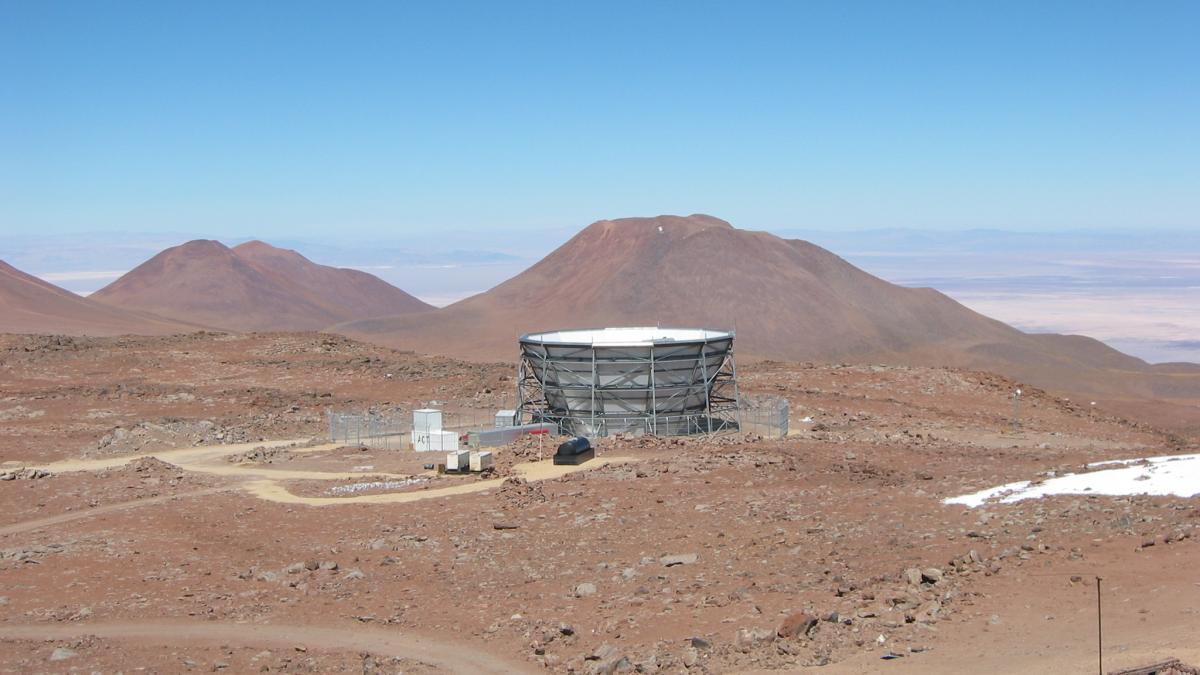New insights into the origins of our universe
July 15, 2020

July 15, 2020

New data released today by the Atacama Cosmology Telescope (ACT) in Chile indicate our universe is around 13.8 billion years old, matching the measurements made by the Planck satellite in 2015, and calling into question the 2019 findings of another research group that determined the age of the universe to be much younger than what the Planck satellite had predicted. That study had measured the movement of galaxies to come up with their number, while the ACT measured polarized light to reach its conclusions.
Mark Halpern, UBC professor in the department of physics and astronomy, is part of the international team collaborating on the ACT, which includes scientists from 41 institutions in seven countries. We spoke with Halpern about these new findings, and their significance.
The Atacama Cosmology Telescope is a six-metre diameter telescope with a very sensitive camera which measures polarized light. It is one of the highest elevation observatories in the world, located along the ridge of the Chilean Andes to avoid having to look through wet air. The telescope itself was built by Empire Dynamic Systems in Port Coquitlam, and taken from Vancouver to Chile by boat.
It is tuned to work at wavelengths near a few millimetres, where the brightest thing in the sky is a thermal glow left over from the plasma which filled the early universe. ACT spends all of its time scanning back and forth, making the most sensitive maps it can of cosmic structure. What is new in this data release is that our measurements of polarization are very precise. The brightness of the sky tells us about structure in the early universe. Polarization tells us about motion. Together, the data give us a very detailed picture of the dynamics.
A portion of a new picture of the oldest light in the universe taken by the Atacama Cosmology Telescope. This part covers a section of the sky 50 times the moon’s width, representing a region of space 20 billion light-years across. The light, emitted just 380,000 years after the Big Bang, varies in polarization (represented here by redder or bluer colors). Astrophysicists used the spacing between these variations to calculate a new estimate for the universe’s age. Credit: ACT Collaboration
The significance of these results, for me, is that even with improved data and better understanding, our model of the universe is holding up very well. The age is not really the big deal here. We used to think the universe was around 13.77 billion years old, plus or minus 40 million years. Now we believe it is 13.79 billion years old, plus or minus 21 million years.
Perhaps 21 million years sounds like a big uncertainty, but as a fraction, this is very precise. Imagine a doctor examining a 50-year-old patient and from their present condition, not their history, estimating their age with a precision of 25 days!
We can be this precise because the data are excellent, the model fits very well, and the model is simple. Given the data, we understand the system, and there are not a lot of options for how the universe has aged. What is amazing is how self-aware we are, and what this tells us about our lives that we can know that the universe has a beginning, and know its age to a high degree of accuracy.
Yes and no. The main story is that these data add quite a bit of precision to our measurements, and even so the simplest model of our universe remains in very good shape. This has been an extraordinary story over the years, with the data improving in precision by a factor of 100,000 and the same models still fit.
But these data do heighten the one bit of tension there is in the overall cosmological data set. When we infer Hubble’s constant—the present-day expansion rate of the universe—from the cosmic microwave background (CMB) and other very large-scale measurements, we get a different value than is measured more locally from what is called a distance ladder. If this difference is real, it is a challenge to cosmological models.
Our observations are continuing. Our next big goal is to search for a tiny parity-violating polarization pattern. If we see it, it is a clue about gravitational radiation generated in the very earliest instants of the birth of the universe. Many experiments, not just ACT, are looking for this signal.
We honour xwməθkwəy̓ əm (Musqueam) on whose ancestral, unceded territory UBC Vancouver is situated. UBC Science is committed to building meaningful relationships with Indigenous peoples so we can advance Reconciliation and ensure traditional ways of knowing enrich our teaching and research.
Learn more: Musqueam First Nation